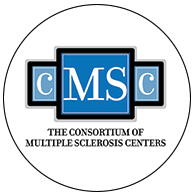Specific disabilities in multiple sclerosis (MS) were associated with voxelwise gray matter loss in distinct locations, a cross-sectional study showed.
Worse performance on the Multiple Sclerosis Functional Composite (MSFC) correlated with voxelwise gray matter volume loss in the middle cingulate cortex (P <0.001) and a cluster in the precentral gyrus bilaterally (P=0.004), Allan MacKenzie-Graham, PhD, of the David Geffen School of Medicine at the University of California Los Angeles, and colleagues reported online in JAMA Neurology.
In addition, worse performance on the Paced Auditory Serial Addition Test correlated with volume loss in the auditory and premotor cortices (P <0.001), the study showed. Worse performance on the 9-Hole Peg Test correlated with gray matter volume loss in Brodmann area 44 (Broca area; P=0.02) and voxelwise gray matter loss in the right paracentral lobulus correlated with bowel and bladder disability (P=0.03).
This approach, which relied on magnetic resonance imaging (MRI), may be used to develop disability-specific biomarkers for use in future clinical trials of neuroprotective treatments in MS, the researchers said.
“This observation of discrete gray matter losses that differ from one clinical disability to another is consistent with our overall hypothesis that, as disabilities differ, patterns of localized gray matter atrophy differ accordingly,” they wrote.
This study has taken an important first step, Michael Racke, MD, and Jaime Imitola, MD, of the Comprehensive Multiple Sclerosis Center at Ohio State University, wrote in an accompanying editorial.
Not only does it identify how areas of cortical atrophy can predict clinical function, it also supports the use of clinical measures in an office setting for longitudinal assessment of individual patients, they said.
“We can also determine whether therapies can help stop cortical loss and whether areas of specific cognitive function can be preserved with therapeutic intervention of current and novel therapies aimed at stopping cortical pathology,” the editorialists wrote. “Perhaps we as a field will reach the point where we will have less issue with the clinicoradiological paradox and will be able to make very specific predictions on spheres of neurologic dysfunction based on regions of gray matter atrophy correlated with clinical measures that go beyond the office neurologic examination.”
MacKenzie-Graham and colleagues examined MRI scans of regional gray matter atrophy in 133 women with relapsing-remitting MS who had enrolled at 16 U.S. sites in a phase II clinical trial of combination treatment with glatiramer acetate (Copaxone) and estriol. Their mean age was 37.4 years.
All patients had active relapsing disease within the previous 24 months and were untreated with a 3-month washout of all other disease-modifying treatments or had been treated for less than 2 months with glatiramer acetate.
After collecting data from June 28, 2007, to Jan. 9, 2014, the researchers used voxel-based morphometry and volumetric analysis to determine whether the loss of gray matter volume would be predictive of specific clinical deficits measured on the Expanded Disability Status Scale (EDSS) and the MSFC. The latter is a combination of tests that involve multiple separate neurologic systems, including the sensory, motor, coordination, attention, and cognition systems.
Correlations between whole-gray matter volume and the MSFC and its component tests were consistent with previous reports, MacKenzie-Graham and colleagues said.
While they did not observe a statistically significant correlation between whole-gray matter volumes and the EDSS scores, they did discover an inverse correlation between whole-gray matter volumes and the EDSS bowel and bladder functional system subscore and between gray matter volumes and the EDSS cerebellar functional system subscore. Less gray matter volume was correlated with more disability, they said.
“Although several studies have reported that gray matter atrophy is associated with EDSS scores, others have not found such a correlation,” the researchers said. “The difference in our observations again may be owing to differences in our patient populations.”
The study had a number of limitations, including the fact that the cohort consisted entirely of untreated female patients with RRMS. The findings may have been different if the patient population had been male or if the patients had progressive MS, they noted.
The researchers called for further longitudinal studies with larger patient populations in order to demonstrate more subtle effects and to track over time correlations between specific disabilities and voxelwise gray matter atrophy.
by Kristin Jenkins
This study was supported by the Conrad N. Hilton Foundation, the National Institutes of Health (NIH), the National Multiple Sclerosis Society, the Brain Mapping Medical Research Organization, Brain Mapping Support Foundation, Pierson-Lovelace Foundation, the Ahmanson Foundation, Capital Group Companies Charitable Foundation, William M. and Linda R. Dietel Philanthropic Fund, Northstar Fund, the National Center for Research Resources, and the Office of the Director of the NIH. No conflicts of interest were disclosed.










